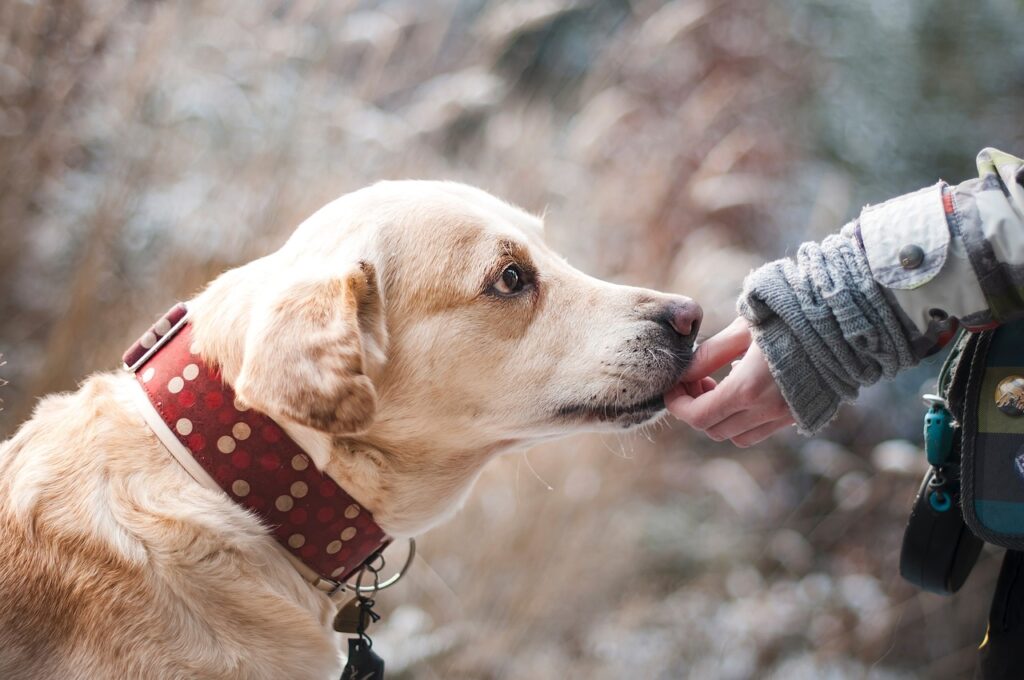Image credit goes to Pixabay
How to Teach a Dog to Roll Over in 9 Easy Steps Teaching new skills and behaviors is probably one of the greatest methods of keeping your dog busy and occupied; it’s also an excellent way of spending some quality time with him. If your dog knows how to do “sit” and “down,” then it’s possible to teach him how to roll over.
Dogs of any age can learn this easy, fun behavior—rolling over, or at least lying on their side. That would often be so handy, like during veterinary exams. Not to speak of how cute everything is! Are you ready to learn about training a dog to roll over? Check these very simple and straightforward techniques for teaching rolling to your small (or large) mischievous child!
When Can You Start Teaching Your Dog Tricks?
You can start teaching your pet new tricks right from the first weeks of being together, but only once your puppy feels comfortable in his new home, of course. In general, the younger the dog is, the easier it will be to teach them new behaviors and tricks. On the other hand, older dogs are more likely to adopt new skills much faster.
It will take longer and require more patience if you’ve taken on an older rescue dog that has never received any training; nonetheless, you’ll be astonished at how much they can still learn given enough time and positive reinforcement.
The Benefits of Training Your Dog
Training is not only a way to strengthen one’s relationship or bond with a dog; whether basic life skills, general obedience exercises, or even tricks, it’s how you as an owner get to learn and work with your dog in any situation, getting to know each other as you communicate.
Additionally, training exercises help your dog’s mind by forcing it to apply reasoning skills, solve problems, and give them something fun to do with you during the day.
Naturally, you can keep your dog safer and ensure their safety around other people if you have better control over them, which comes from training.
Also Read : How to Introduce a Dog to a Baby
What You Need
You can teach your dog to roll over without any special equipment. All you have to do is
- A quiet space – that is devoid of any distractions, including pets, other people, and noise
- A soft floor – like a thick rug or carpet. Grass on soft soil works nicely in peaceful gardens as well.
- Delicious treats – To make them easier to consume, these should be little and soft. The more flavor and aroma, the better!
- Patience
How to Teach a Dog to Roll Over
Teaching the rollover involves many steps, but if you take it one step at a time, it’s a really simple activity.
Some dogs, due to their athleticism, cannot roll over or are just too tight to not be restricted by their bodies. Others might be bony, and it would hurt them. If you find that your dog is having a problem in this regard, then lay this trick aside for a bit and work on the areas where the issues are rooted before trying again at a later date.
- Make sure that your dog can do the obedience cues “down” and “lie down.” Even better is if you have taught them the “play dead” trick because that will help in starting the trick for both you and your dog.
- Reward your dog for lying down when they comply with your repeated requests. When babies lie down, observe whether they naturally drop the hips onto one direction or the other. If they do, this will give you a strong indication of which way they will like to roll.
- Practice this until your dog will lie on one hip when you lure them around to that side. Now you can move on to the next step.
- Keep going across the dog’s back with the treat, but when you have reached the halfway point and the dog’s body has rolled halfway around, change the movement slightly to lengthen the dog’s neck a bit while maintaining the rolling motion. It sounds confusing when you read it, but when you actually do it, it makes complete sense!
Tips When Teaching Your Dog Tricks
1. Don’t Try to Speed Up the Process By Rushing
It will take time and practice to teach a dog to roll, so don’t expect results right away.
This includes you as well as your dog. Keep in mind the need to always be consistent and patient. When you feel that you are beginning to get frustrated, just stop what you are doing, rest, then try again later.
2. Be Enthusiastic and Have Fun
Dogs read through our voice, feelings, and behaviors; if you’re having fun they will have fun.
3. Make Sure You Are Training This Exercise in the Right Place
Make sure you are exercising on a soft surface because rolling over might cause pain to a dog’s hips or spine, especially if they are bony or slender. Additionally, avoid training this near other dogs. Dogs may not feel comfortable rolling over in front of other dogs because it makes them feel vulnerable.
4. If Your Dog Ready for This Exercise?
This is a really physically taxing activity, so it’s best to avoid it if your dog is extremely elderly, very young, or unfit.
Now, have fun showing off your dog’s newest skill, and pat yourself on the back for a job well done. It is supposed to be fun—teaching a dog a trick. Take your time and enjoy.

